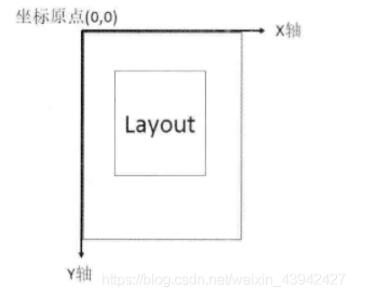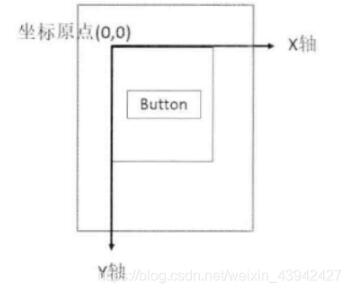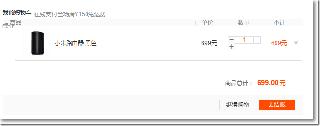Android實現滑動效果
本文實例為大家分享了Android實現滑動效果的具體代碼,供大家參考,具體內容如下
坐標系與視圖坐標系相輔相成
1、坐標系:描述了View在屏幕中的位置關系(以屏幕最左上角的頂點作為Android坐標系的原點)

2、視圖坐標系:描述了子視圖在父視圖中的位置關系(以父視圖最左上角為坐標系原點)

獲取坐標值的方法
1.View提供的獲取坐標方法
getTop():獲取到的是View自身的頂邊到其父布局頂邊的距離getLeft():獲取到的是View自身的左邊到其父布局頂邊的距離getRight():獲取到的是View自身的右邊到其父布局頂邊的距離getBottom():獲取到的是View自身的底邊到其父布局頂邊的距離
2. MotionEvent提供的方法
getX():獲取點擊事件距離控件左邊的距離,即視圖坐標getY():獲取點擊事件距離控件頂邊的距離,即視圖坐標getRawX():獲取點擊事件距離整個屏幕左邊的距離,即絕對坐標getRawY():獲取點擊事件距離整個屏幕右邊的距離,即絕對坐標

實現滑動的七種方法
1.layout方法
case MotionEvent.ACTION_MOVE: //計算偏移量 int offsetX=x-lastX; int offsetY=y-lastY; layout(getLeft()+offsetX,getTop()+offsetY,getRight()+offsetX,getBottom()+offsetY); break;
2.offsetLeftAndRight()與 offsetTopAndBottom()
offsetLeftAndRight(offsetX);offsetTopAndBottom(offsetY);
3.LayoutParams
LinearLayout.LayoutParams params= (LinearLayout.LayoutParams) getLayoutParams();params.leftMargin= getLeft()+offsetX;params.topMargin= getTop()+offsetY;setLayoutParams(params);
4.scrollBy()與scrollTo()
scrollBy(x,y)表示移動到一個具體的位置scrollTo(dx,dy)表示移動的增量為dx,dy
int offsetX=x-lastX;int offsetY=y-lastY;View parent= (View) getParent();parent.scrollBy(-offsetX,-offsetY);

5.Scroller
通過Scroller類可以實現平滑移動的效果,而不是瞬間完成的效果,與動畫的實現原理基本相似
@Override public void computeScroll() { super.computeScroll(); //判斷scroller是否執行完畢 if (scroller.computeScrollOffset()){ View view= (View) getParent(); //獲得當前的滑動坐標 view.scrollTo(scroller.getCurrX(),scroller.getCurrY()); //通過重繪來不斷調用computeScroll invalidate(); //invalidate()--->draw()---->computeScroll() } }
case MotionEvent.ACTION_UP: //手指離開時,執行滑動過程 View viewGroup= (View) getParent(); scroller.startScroll( viewGroup.getScrollX(), viewGroup.getScrollY(), -viewGroup.getScrollX(), -viewGroup.getScrollY(),500); invalidate(); break;
6.屬性動畫
7.ViewDragHelper類
public class DrawGroup extends FrameLayout { private ViewDragHelper helper; private View mainView,menuView; public DrawGroup(@NonNull Context context) { super(context); inView(); } public DrawGroup(@NonNull Context context, @Nullable AttributeSet attrs) { super(context, attrs); inView(); } public DrawGroup(@NonNull Context context, @Nullable AttributeSet attrs, int defStyleAttr) { super(context, attrs, defStyleAttr); inView(); } private void inView(){ helper=ViewDragHelper.create(this, new ViewDragHelper.Callback() { @Override public boolean tryCaptureView(@NonNull View child, int pointerId) { //如果當前觸摸的child是mainView時開始檢測 return child==mainView; } @Override public int clampViewPositionHorizontal(@NonNull View child, int left, int dx) { //水平方向上的滑動 return left; } @Override public int clampViewPositionVertical(@NonNull View child, int top, int dy) { //垂直方向上的滑動 return 0; } @Override public void onViewReleased(@NonNull View releasedChild, float xvel, float yvel) { //拖動結束后調用 super.onViewReleased(releasedChild, xvel, yvel); //手指抬起后緩慢移動到指定位置 if (mainView.getLeft()<300){ //關閉菜單 helper.smoothSlideViewTo(mainView,0,0); //相當于scroller的startScroll方法 }else { //打開菜單 helper.smoothSlideViewTo(mainView,300,0); } ViewCompat.postInvalidateOnAnimation(DrawGroup.this); } }); } @Override public boolean onInterceptTouchEvent(MotionEvent ev) { return helper.shouldInterceptTouchEvent(ev); } @Override public boolean onTouchEvent(MotionEvent event) { //將觸摸事件傳遞給ViewDragHelper,此操作必不可少 helper.processTouchEvent(event); return true; } @Override public void computeScroll() { if (helper.continueSettling(true)){ ViewCompat.postInvalidateOnAnimation(this); } } @Override protected void onFinishInflate() { super.onFinishInflate(); //加載完布局調用 menuView=getChildAt(0); mainView=getChildAt(1); } @Override protected void onSizeChanged(int w, int h, int oldw, int oldh) { super.onSizeChanged(w, h, oldw, oldh); }} onViewCaptured():在用戶觸摸到View后回調 onViewDragStateChanged():在拖拽狀態改變時回調(idle,dragging…) onViewPositionChanged():在位置改變時回調,常用于滑動時更改scale進行縮放等效果
以上就是本文的全部內容,希望對大家的學習有所幫助,也希望大家多多支持好吧啦網。
相關文章:

 網公網安備
網公網安備